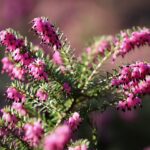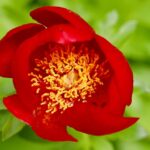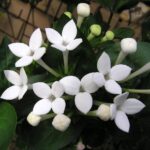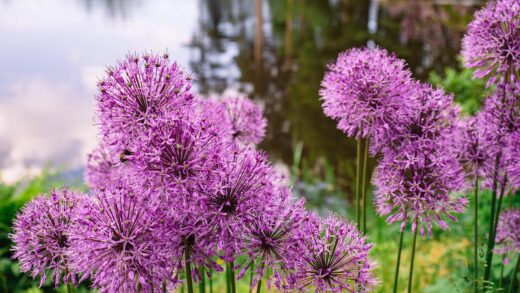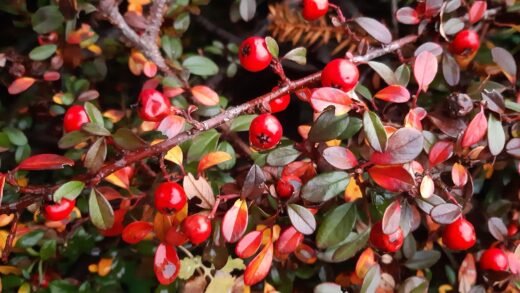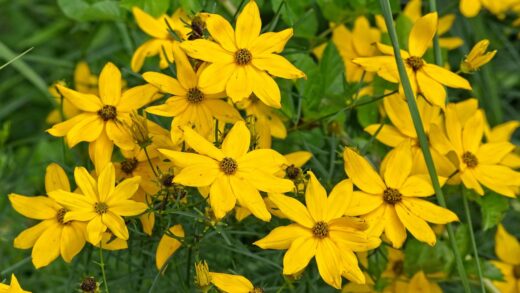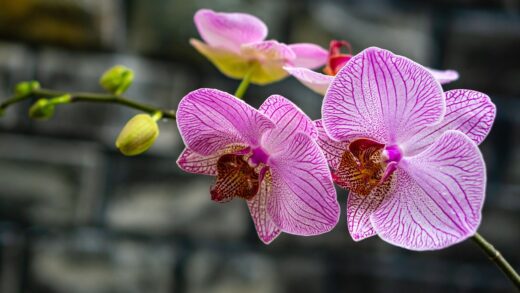Bouvardia, a genus cherished for its clusters of fragrant, star-shaped flowers, represents a delightful challenge and reward for the dedicated gardener. Native to Mexico and Central America, these plants bring a touch of the exotic to any collection, whether grown in a greenhouse, a container, or as a tender perennial in warmer climates. Successful cultivation hinges on understanding its specific needs, which are deeply rooted in its subtropical origins. Providing the right balance of light, water, and nutrients is paramount to coaxing forth its stunning blooms, which are popular in both gardens and floral arrangements for their elegance and scent. This guide provides a comprehensive overview of the essential care practices required to ensure your bouvardia not only survives but thrives, producing a continuous display of color and fragrance throughout its growing season.
The foundation of healthy bouvardia cultivation begins with the selection of an appropriate growing medium and container. These plants demand well-draining soil to prevent root rot, a common issue stemming from excessive moisture. An ideal potting mix consists of equal parts peat moss, perlite, and loam, which provides aeration, moisture retention, and essential nutrients. When selecting a pot, ensure it has adequate drainage holes at the bottom. Terracotta pots are often a good choice as their porous nature allows for better air and moisture exchange, helping the soil to dry out more evenly between waterings.
Temperature and humidity are critical environmental factors that significantly influence the growth and flowering of bouvardia. They flourish in warm conditions, with an ideal daytime temperature range between 20-25 degrees Celsius and slightly cooler nighttime temperatures. It is crucial to protect them from frost, as they are not cold-hardy and can be severely damaged or killed by freezing temperatures. Mimicking their native humid environment can also be beneficial; this can be achieved by placing the pot on a tray of wet pebbles or by regularly misting the foliage, especially during dry indoor conditions.
Ongoing maintenance throughout the growing season is key to a vibrant and floriferous plant. Regular inspection of the plant for any signs of stress, pests, or disease allows for early intervention and treatment. Removing spent flowers, a practice known as deadheading, is not merely for aesthetic purposes; it encourages the plant to redirect its energy into producing new blooms rather than developing seeds. Furthermore, periodic repotting every one to two years ensures the plant has ample space for root growth and access to fresh, nutrient-rich soil, which is essential for its long-term health and vitality.
Soil and potting requirements
Selecting the correct soil composition is arguably one of the most critical steps in successfully cultivating bouvardia. These plants are particularly susceptible to root diseases when their roots are waterlogged, making excellent drainage a non-negotiable requirement. A high-quality, peat-based potting mix amended with coarse sand or perlite is highly recommended to enhance aeration and prevent soil compaction. This combination ensures that while moisture is retained for the plant’s use, any excess water can easily drain away from the root zone. Avoid using heavy garden soils or clay, as these materials retain too much water and can lead to fatal root rot.
The pH of the soil also plays a significant role in the bouvardia’s ability to absorb nutrients effectively. These plants prefer a slightly acidic to neutral soil environment, with an ideal pH range of 6.0 to 7.0. If the soil is too alkaline, the plant may struggle to take up essential micronutrients like iron, leading to conditions such as chlorosis, where the leaves turn yellow while the veins remain green. You can test your soil’s pH with a simple kit and amend it accordingly, using sulfur to lower the pH or lime to raise it if necessary, though most commercial potting mixes fall within an acceptable range.
When it comes to potting, the size and type of the container are important considerations for promoting a healthy root system. Choose a pot that is only slightly larger than the plant’s current root ball, as a container that is too large will hold excess soil and moisture, increasing the risk of overwatering. As the plant grows, it should be repotted into a progressively larger pot, typically every spring before the new growth season begins. This process, known as “potting up,” provides fresh soil and prevents the plant from becoming root-bound, a condition where the roots circle the inside of the pot and restrict growth.
Proper potting technique is also essential for establishing a healthy plant. When transferring the bouvardia to a new pot, gently loosen the root ball to encourage the roots to grow outwards into the new soil. Place the plant in the new container at the same depth it was growing previously, as planting it too deep can lead to stem rot. After potting, water the plant thoroughly to help settle the soil around the roots, and then allow the top layer of soil to dry out before watering again to encourage strong root development.
Temperature and humidity needs
Bouvardia’s origins in the warm climates of Central America dictate its preference for stable, warm temperatures. During the active growing season in spring and summer, maintaining an ambient temperature between 20 and 25 degrees Celsius will promote vigorous growth and prolific flowering. It is important to avoid drastic temperature fluctuations, so placing the plants away from drafty windows, doors, or air conditioning vents is advisable. In regions with cooler climates, bouvardia is often grown in greenhouses where temperature can be precisely controlled to meet these specific requirements throughout the year.
As autumn approaches and daylight hours shorten, a slight drop in temperature can help initiate the plant’s dormancy period, which is natural and beneficial. A cooler range of 10 to 15 degrees Celsius during the winter months is ideal for this resting phase. This period allows the plant to conserve energy, which will then fuel a robust burst of growth and flowering in the following spring. However, it is absolutely critical to protect the plant from temperatures approaching freezing, as even a light frost can cause significant damage to the foliage and stems, potentially killing the plant entirely.
In addition to temperature, humidity levels play a crucial role in replicating bouvardia’s native habitat. These plants thrive in environments with higher humidity, which helps to keep their foliage lush and prevent issues like leaf tip browning. In a typical home environment, especially during winter when central heating is in use, the air can become quite dry. To counteract this, you can increase the ambient humidity around your bouvardia by grouping it with other plants, placing it on a pebble tray filled with water, or using a room humidifier.
Regular misting can also provide a temporary boost in humidity and help to keep the leaves clean and free of dust, which can interfere with photosynthesis. Use room-temperature water to avoid shocking the plant and mist in the morning to allow the foliage to dry before nightfall, reducing the risk of fungal diseases. While bouvardia appreciates high humidity, it is also important to ensure good air circulation around the plant to prevent the development of mildew and other moisture-related problems. A small fan set on low can help to gently move the air in a greenhouse or indoor growing space.
Flowering and deadheading
The primary allure of the bouvardia is its magnificent display of flowers, which are borne in terminal clusters and can range in color from white and pink to vibrant red and orange. To encourage and sustain this prolific blooming, several factors must be aligned, including adequate light, proper nutrition, and consistent moisture. Bouvardia plants typically begin to flower in late spring or early summer and can continue to produce blooms throughout the warm months if their needs are met. The flowering period is a time of high energy expenditure for the plant, making attentive care during this phase particularly important.
A key practice to prolong the flowering season and maintain the plant’s appearance is deadheading. This involves the removal of faded or spent flower clusters before they have a chance to set seed. When a flower is pollinated and begins to produce seeds, the plant diverts a significant amount of energy towards this reproductive process. By snipping off the old blooms at the base of their stalk, you signal to the plant that its reproductive cycle has been interrupted, encouraging it to channel its resources back into producing new buds and flowers instead.
Deadheading should be performed regularly, ideally as soon as you notice the flowers beginning to wilt or lose their color. Use clean, sharp scissors or pruning shears to make a clean cut, which helps to prevent tearing the stem and creating a potential entry point for diseases. This simple task not only promotes more flowers but also keeps the plant looking tidy and well-maintained, enhancing its overall ornamental value. It also improves air circulation through the foliage, which can help to reduce the risk of fungal infections.
Beyond deadheading, ensuring the plant receives optimal conditions will maximize its flowering potential. Bouvardia flowers most profusely when it receives plenty of bright, indirect sunlight, as direct, harsh sun can scorch the leaves and flowers. A balanced fertilizer, applied during the growing season, provides the necessary nutrients to support the energy-intensive process of blooming. By combining these care elements—proper light, nutrition, and the diligent practice of deadheading—you can enjoy a continuous and spectacular show of bouvardia flowers for many months.
Long-term maintenance and repotting
As a bouvardia plant matures, its long-term health depends on a consistent maintenance routine that extends beyond daily watering and feeding. Repotting is a critical component of this long-term care, and it should typically be done every one to two years, or whenever the plant shows signs of being root-bound. Indications that a plant needs a larger pot include roots growing out of the drainage holes, slowed growth, and the soil drying out much faster than usual. The best time to repot is in the early spring, just as the plant is emerging from its winter dormancy and beginning its active growth cycle.
When you decide it is time to repot, choose a new container that is only about 2-5 centimeters wider in diameter than the previous one. This gradual increase in pot size prevents the soil from staying wet for too long, which could harm the roots. Carefully remove the plant from its old pot, taking care not to damage the root ball. Gently tease apart any circling roots at the bottom and sides to encourage them to grow into the new soil. Place a layer of fresh, well-draining potting mix in the new pot, position the plant, and fill in the sides with more mix, firming it gently.
After repotting, water the plant thoroughly to help the soil settle and to rehydrate the roots. It is important to allow the plant some time to adjust to its new environment. You may notice a brief period of slowed growth as the plant dedicates its energy to establishing a new root system in the fresh soil. For this reason, it is best to withhold fertilizer for about four to six weeks after repotting, as the new soil will contain an adequate supply of nutrients, and fertilizing too soon can burn the sensitive, newly developing roots.
In addition to repotting, long-term maintenance also involves monitoring the plant’s overall shape and structure. Over time, a bouvardia can become leggy or overgrown, with long, sparse stems. Regular pruning, which is often done in conjunction with repotting in the spring, helps to maintain a compact, bushy shape and encourages more prolific flowering. By providing this consistent care year after year, you ensure the continued health, vigor, and beauty of your bouvardia plant for a long lifespan.
Common challenges in general care
Even with the most attentive care, gardeners may encounter some common challenges when cultivating bouvardia. One of the most frequent issues is yellowing leaves, a condition that can be caused by a variety of factors. Overwatering is a primary culprit, as saturated soil deprives the roots of oxygen and can lead to root rot, which in turn prevents the plant from absorbing nutrients. Conversely, underwatering can also cause leaves to yellow and drop as the plant sheds foliage to conserve moisture. It is crucial to assess the soil moisture carefully and adjust your watering routine to find the right balance for your specific growing conditions.
Another potential cause of yellowing leaves is a nutrient deficiency, particularly a lack of iron, which results in a specific pattern called iron chlorosis. In this case, the leaves turn yellow, but the veins remain green. This often occurs when the soil pH is too high (alkaline), which ‘locks up’ the iron in the soil, making it unavailable to the plant. To remedy this, you can apply a fertilizer containing chelated iron, which is a form of iron that is more readily available to plants, or take steps to gently lower the soil’s pH over time using an acidifying fertilizer.
Pest infestations can also present a significant challenge for bouvardia growers, especially when the plants are grown indoors or in a greenhouse. Common pests include aphids, whiteflies, and spider mites, which feed on the plant’s sap and can cause stippling, leaf distortion, and a general decline in health. Regularly inspecting the undersides of leaves and the junctions between stems and leaves can help you catch infestations early. Treatment options range from washing the pests off with a strong stream of water to applying insecticidal soap or neem oil for more persistent problems.
Finally, inadequate light is a common reason for a bouvardia to fail to thrive or produce flowers. These plants need several hours of bright, indirect sunlight each day to photosynthesize effectively and generate the energy required for blooming. If a plant is kept in a location that is too shady, it may become leggy, with sparse foliage and few to no flowers. Moving the plant to a brighter location, such as an east-facing window where it can receive gentle morning sun, can often resolve this issue and stimulate healthy, compact growth and a profusion of blooms.

